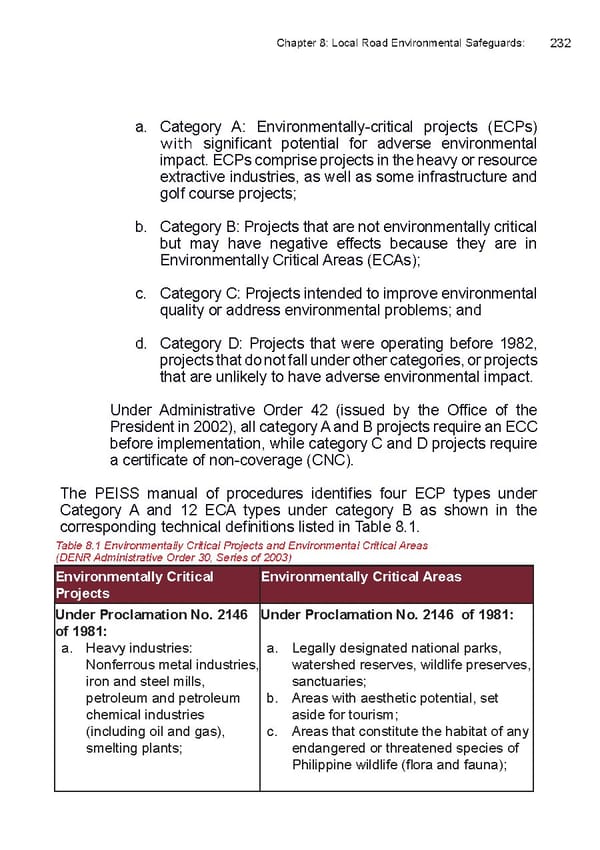Chapter 8: Local Road Environmental Safeguards: 232 a. Category A: Environmentally-critical projects (ECPs) with signiifcant potential for adverse environmental impact. ECPs comprise projects in the heavy or resource extractive industries, as well as some infrastructure and golf course projects; b. Category B: Projects that are not environmentally critical but may have negative effects because they are in Environmentally Critical Areas (ECAs); c. Category C: Projects intended to improve environmental quality or address environmental problems; and d. Category D: Projects that were operating before 1982, projects that do not fall under other categories, or projects that are unlikely to have adverse environmental impact. Under Administrative Order 42 (issued by the Oiffce of the President in 2002), all category A and B projects require an ECC before implementation, while category C and D projects require a certiifcate of non-coverage (CNC). The PEISS manual of procedures identiifes four ECP types under Category A and 12 ECA types under category B as shown in the corresponding technical deifnitions listed in Table 8.1. Table 8.1 Environmentally Critical Projects and Environmental Critical Areas (DENR Administrative Order 30, Series of 2003) Environmentally Critical Environmentally Critical Areas Projects Under Proclamation No. 2146 Under Proclamation No. 2146 of 1981: of 1981: a. Heavy industries: a. Legally designated national parks, Nonferrous metal industries, watershed reserves, wildlife preserves, iron and steel mills, sanctuaries; petroleum and petroleum b. Areas with aesthetic potential, set chemical industries aside for tourism; (including oil and gas), c. Areas that constitute the habitat of any smelting plants; endangered or threatened species of Philippine wildlife (lfora and fauna);
 LRM Manual CMGP Page 231 Page 233
LRM Manual CMGP Page 231 Page 233